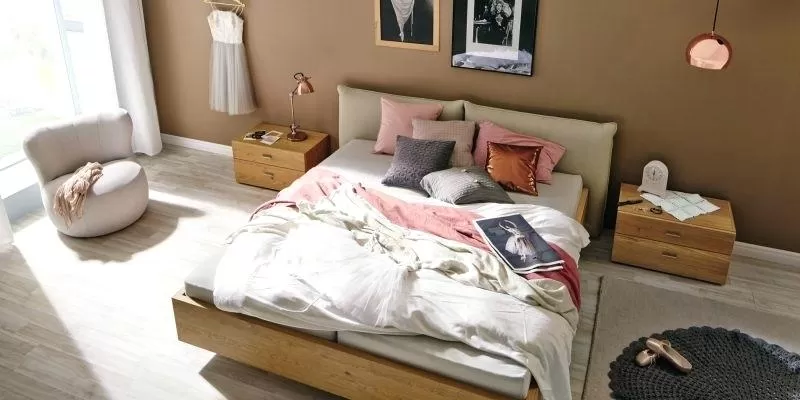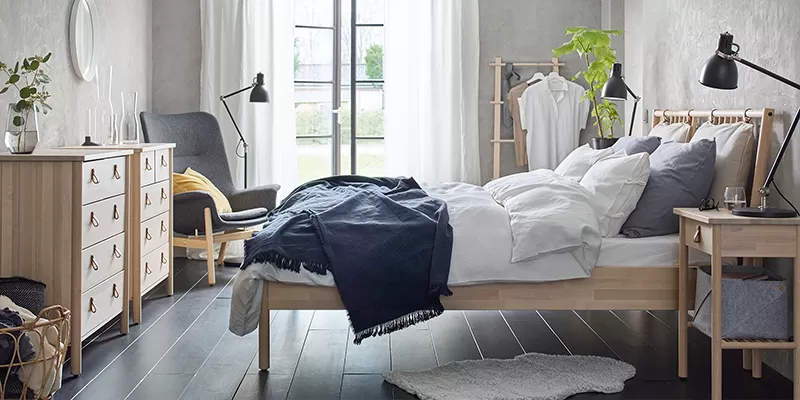
Compare ranforce and satin
How nice it is when a product purchased from high-quality fabric is durable and has an excellent appearance. Thanks to modern technologies, new varieties of natural materials are emerging. Many consumers, for example, are interested in which fabric is better: ranforce or satin? But the question is not entirely correct, since these are ways of weaving threads, but the composition can be varied. Our experts tried to understand the features of the materials.
Ranforce: features, properties

Unusual product names, whatever they may be, evoke a more active response from consumers. This happened with the ranforce fabric, which is nothing more than a calico fabric made from natural cotton fibers.
The main difference between ranfors and coarse calico is a more perfect weave of threads. This is the so-called equal-density calico. The cotton threads used in its production are subjected to careful and multi-stage processing: they are combed out, cleaned, bleached, polished and, at the last stage, twisted.
Often, expensive cotton is added to these threads, consisting of long fibers and made in Egypt. Created as a result of a long and complex process, the fabric is airy, pleasant to the touch and at the same time very durable. Coarse calico, for example, contains 42 threads per square centimeter, and ranforce — about 60.
The main advantages of the fabric:
-
Softness — the material is incredibly silky and airy; -
naturalness — in the prevailing number of cases, manufacturers sell ranforce, which consists entirely of natural threads. True, sometimes 1/5 polyester is added to the material (a synthetic fabric obtained chemically from hydrocarbons); -
Strength – multi-stage processing of the fiber allows to achieve incredible strength. It is thanks to her that ranfors is known as a very strong fabric that can withstand many «trials»; -
Durability — due to its high strength, ranforce can last for many years without losing its original qualities even with active use and frequent washing; -
Hygroscopicity – ranforce absorbs moisture well, so sleeping on bed linen made from this fabric will be very comfortable (without the so-called “greenhouse” effect — even after absorbing a significant amount of biological fluid, the material will remain dry); -
hygiene — only safe and at the same time very resistant substances are used as dyes for ranfors. The result is a durable color / pattern that does not lose its appearance even after a long operational period; -
Ease of maintenance — it is enough to periodically wash products made from ranfors in the appropriate temperature regime. Ironing the fabric will also not cause much trouble.
Satin: features, properties

Satin is a material that has been known on the fabric market for much longer. Belongs to the premium class. In the manufacture of satin, diagonally interlaced satin threads are used. Due to the presence of longer weft threads, the front of the fabric has a beautiful sheen that does not disappear even after numerous washes.
Satin is very easy to confuse with silk, but, unlike the latter, it is not slippery and cold — it is a very warm and delicate material. Manufacturers of natural fabrics produce several varieties of satin:
-
Standard satin (the number of threads does not exceed 130) — used to create classic underwear. This category also includes canvas created by embossing, as well as mercerized (perfectly smooth, without spools);
-
Printed satin (the number of threads does not exceed 170) — is used mainly for bed linen sets — the pattern is formed due to the use of colored threads in the canvas;
-
Printed satin — differs in the same density as printed satin, but at the same time the ornament is applied directly to the fabric;
-
Jacquard (the number of threads — 170-220) — has an original convex pattern;
-
Mako-satin (maximum density — up to 220 threads) — expensive Egyptian cotton is used in the manufacture, the fabric is incredibly durable and airy, surprisingly thin;
-
Stripe satin — decorated with striped ornaments — has an attractive look and is often used in luxury hotel rooms.
The main advantages of satin:
-
naturalness — in the manufacture of satin, only natural threads are used (mainly cotton). The one that is denser goes to the base, the less dense (twisted) goes to the front side; -
Durability — well-made satin is able to last for a long time — according to some reports, it can withstand from 200 washes, while not losing its attractive appearance; -
Wrinkle resistance — satin fabric practically does not wrinkle — even if you sleep on linen from such material for a whole week, it will be enough to shake it slightly — the bed will look very neat; -
Rough reverse side — in contrast to the glossy, perfectly smooth front side, the reverse side is matte and somewhat rough, which ensures strong adhesion of the material to the surface of the furniture or mattress.
As for the shortcomings, we can name, perhaps, one conditional one — a high price. It is satin linen that is considered the most expensive among those made of cotton.
Comparative characteristics
As usual, we sum up. Our experts conducted a thorough comparison of the two materials and here’s what they came up with.
|
|
|
|
|
|
Shiny front and rough back
|
Both sides matte, slightly rough
|
|
|
130-135 g/square meter (which makes the material warmer and more comfortable for cold weather)
|
120 mg/square meter
|
|
|
More suitable for design experiments (which are worth the incredible beauty of voluminous jacquard patterns)
|
Suitable for drawing 3D drawings
|
|
|
Incredibly strong and resistant to wear thanks to loose weft threads
|
Durable and able to withstand long-term use
|
|
|
Requires careful and delicate care
|
Easy care: washable at 40 0C, easy to iron
|
|
|
It will last for many years, but over time it will begin to lose its former luster
|
Will last for many years
|
Добавить комментарий
Для отправки комментария вам необходимо авторизоваться.